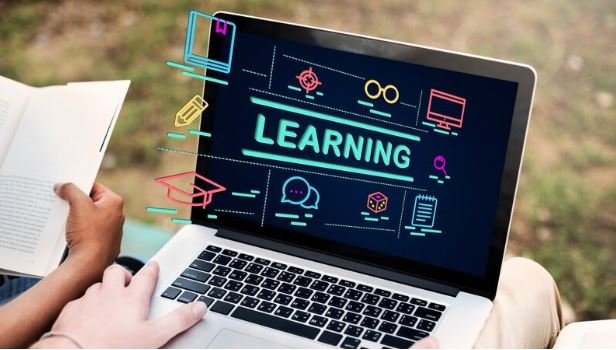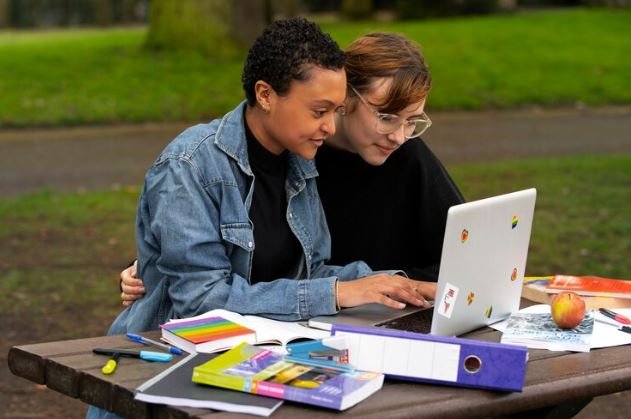Computer-assisted learning is a way of using computers to help students understand different subjects, practice new skills, and explore the world of knowledge.
The benefits of computer-assisted learning refer to the advantages of using computers and digital tools in the classroom or at home to make learning easier, more fun, and more effective.
From practicing math problems to exploring history and science, computers help students learn in ways that are interactive and engaging.
What Is Computer-Assisted Learning?
Computer-assisted learning, or CAL, uses computers to support students in their education. This approach combines traditional learning with digital tools like educational software, online lessons, games, and interactive activities. CAL allows students to learn at their own pace, get instant feedback, and even explore subjects that interest them.
For example, students can use a computer to practice math, read stories, or watch videos that explain science experiments. Computers make learning more dynamic by allowing students to see and interact with lessons, making it easier for them to understand and remember what they learn.
Why Computer-Assisted Learning Is Important
Computer-assisted learning is important because it helps make education more accessible and effective. Computers provide students with tools that can make learning fun and interesting, making it easier for them to stay focused. CAL also helps teachers by giving them more ways to teach and monitor their students’ progress.
In today’s world, technology plays a big role in education and many other areas of life. Learning to use computers and digital tools is essential for students because it prepares them for the future. By using computers, students become comfortable with technology, which helps them build skills that are useful for school and in their future careers.

Benefits of Computer-Assisted Learning
There are many benefits to using computers in education. Here are some of the ways that computer-assisted learning helps students:
- Interactive Learning: Computers allow students to interact with their lessons through games, quizzes, and activities. Instead of just reading a book or listening to a teacher, students can click, type, and explore information in a hands-on way. This makes learning more engaging and helps students understand difficult topics better.
- Learning at Their Own Pace: Not all students learn at the same speed. Some students may need extra time to understand a subject, while others might be ready to move on faster. Computer-assisted learning allows students to work at their own pace, taking time when they need it and moving forward when they’re ready.
- Instant Feedback: When students complete quizzes or practice exercises on a computer, they receive instant feedback. This means they know right away if their answer is correct or not, helping them learn from their mistakes and improve quickly. This immediate response makes it easier for students to keep track of their progress.
- Access to a World of Information: Computers give students access to a huge amount of information. Through the internet, they can explore topics in science, history, literature, and more. They can watch videos, read articles, and even take virtual field trips to places like museums or historical sites.
- Supports Different Learning Styles: Every student learns differently. Some learn best by reading, others by listening, and some by doing activities. Computers can provide various types of lessons, like videos, audio recordings, and interactive exercises, to match each student’s preferred learning style.
- Improves Digital Skills: In addition to learning subjects like math and reading, computer-assisted learning helps students develop digital skills. They learn to type, search for information, and use different types of software, which are all useful skills for school and future jobs.
These benefits make computer-assisted learning a powerful tool for helping students succeed and enjoy their education.
Examples of Computer-Assisted Learning Activities
There are many types of activities students can do on computers to help with their learning. Here are a few examples:
- Math Games: There are educational games that make learning math fun by allowing students to solve problems in a playful way. These games help students practice addition, subtraction, multiplication, and division with levels and rewards that make math exciting.
- Reading Programs: Reading programs help students practice reading skills by offering stories and exercises that match their reading level. Many programs have features that highlight words as they are read aloud, helping students improve their reading comprehension and vocabulary.
- Science Simulations: Computer simulations let students explore science in a virtual environment. For example, students can see how a plant grows, study the planets in the solar system, or conduct virtual chemistry experiments. These simulations help students understand science concepts that are sometimes difficult to see in real life.
- Typing Practice: Typing programs teach students how to type faster and more accurately. Typing is an important skill for using computers, and these programs make it fun by including games that encourage students to practice regularly.
- Foreign Language Learning: Programs like Duolingo and Rosetta Stone help students learn new languages through exercises, pronunciation practice, and vocabulary building. Learning a language on the computer allows students to hear native speakers and practice speaking at their own pace.
These activities help students learn in a variety of subjects, building skills, and knowledge in ways that are enjoyable and effective.

How Computers Help Teachers and Parents
Computer-assisted learning is helpful not only for students but also for teachers and parents. Here’s how computers make teaching and supporting students easier:
- Track Progress: Computers can keep track of a student’s progress in subjects like math, reading, and science. Teachers and parents can see what the students have completed, where they are struggling, and how they are improving. This information helps teachers plan lessons and lets parents know how they can support their children at home.
- Create Custom Lessons: Many programs allow teachers to create custom lessons for students. For example, if a student needs extra help with reading, the teacher can assign additional reading activities on the computer. This personalized approach makes sure each student gets the practice they need.
- Save Time on Grading: Some computer programs automatically grade quizzes and assignments. This saves teachers time, allowing them to spend more time helping students instead of grading papers.
- Make Learning Fun: Computers offer games, animations, and videos that make learning enjoyable. When students have fun learning, they are more likely to stay focused and want to learn more.
- Flexible Learning at Home or School: Computer-assisted learning can happen anywhere. Students can use their computers at school or home, making learning flexible and easy to fit into any schedule. This also makes it easier for parents to get involved and help their children with schoolwork.
These benefits make computer-assisted learning a great choice for teachers and parents who want to support students’ education.
Challenges of Computer-Assisted Learning and How to Overcome Them
While computer-assisted learning has many benefits, there can also be challenges. Here are some common challenges and ways to overcome them:
- Access to Computers: Not all students have access to a computer at home, which can make it harder for them to use computer-assisted learning tools. Schools can help by providing computers in the classroom or offering resources for students to use after school.
- Screen Time: Spending too much time on screens can be tiring for the eyes. It’s important for students to take breaks and balance computer learning with activities that don’t involve screens, like reading books or playing outside.
- Internet Safety: When students use the internet, it’s important for them to stay safe. Teachers and parents should talk to students about not sharing personal information online and only using websites that are safe and educational.
- Technical Problems: Sometimes, computers have technical issues, like programs not working or slow internet. Schools can support students by having tech support available and teaching students how to troubleshoot basic problems.
By being aware of these challenges and planning, students, teachers, and parents can make sure computer-assisted learning is safe, balanced, and effective.

The Future of Computer-Assisted Learning
As technology continues to advance, computer-assisted learning is likely to become even more important in education. New tools and programs are being developed all the time, offering even more ways to help students learn.
Virtual reality, for example, allows students to experience history, science, and art in ways that feel like real-life adventures. Artificial intelligence can create customized lessons that adjust to each student’s learning speed and needs.
In the future, computer-assisted learning will continue to help students explore subjects in creative ways, make learning accessible to everyone, and build skills that are essential for modern life. These tools will keep making education more interactive, fun, and effective.
Conclusion
Computer-assisted learning has many benefits that make education easier, more interesting, and more accessible. By using computers, students can learn at their own pace, interact with lessons, get instant feedback, and explore a wide range of subjects in fun ways.
Teachers and parents also benefit from the tracking and customization tools computers offer, making it easier to support students’ learning.
While there are challenges, like balancing screen time and ensuring internet safety, careful planning and guidance can make computer-assisted learning a positive experience.
As technology continues to develop, computer-assisted learning will keep providing exciting opportunities that make education more engaging and effective for students of all ages. Through this approach, students gain not only knowledge but also the skills they need to succeed in the digital world.

